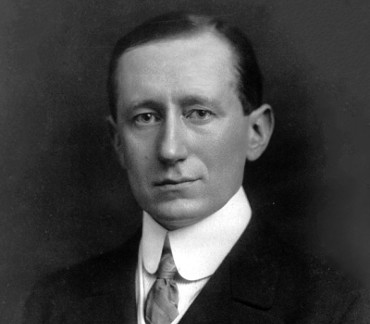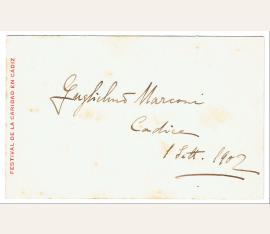italienischer Funktechniker, Nobelpreisträger (1874-1937). Eigenhändiger Namenszug auf Albumblatt. Cádiz. Quer-8vo. 1 p. Gedr. Karte „Festival de la Caridad en Cádiz“.
$ 515 / 480 €
(83765)
Hübscher Namenszug auf Karte. Die Karte leicht fleckig.
Radio- und Telegraphiepionier, Nobelpreisträger für Physik (1874-1937). Printed menu signed. Paris. 30.09.1925. 3 SS. auf Doppelblatt. 8vo.
$ 482 / 450 €
(85548/BN56181)
Menu card of a dinner given on the occasion of the "XIe Conférence Télégraphique Internationale", hosted by the "Compagnies de T. S. F. étrangères" and chaired by senator Guglielmo Marconi. - Signed on the second leaf. Old punched holes along the upper edge and pencil note "M. Belin".


